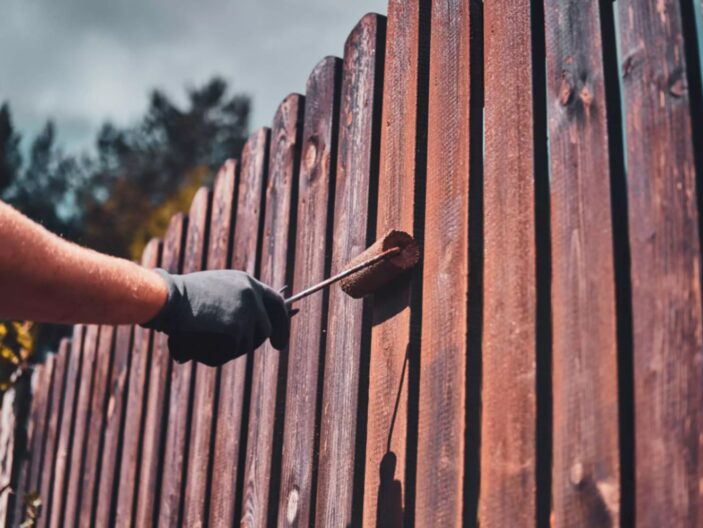Are you looking to keep your fence in top condition?
We explore the reasons why protecting your fence is crucial and discuss common causes of damage like weather conditions, age, wear, pest infestations, and accidental damage.
Find practical tips on how to safeguard your fence from these issues, including regular maintenance, applying protective coatings, choosing durable materials, and more.
Learn how to keep your fence looking its best!
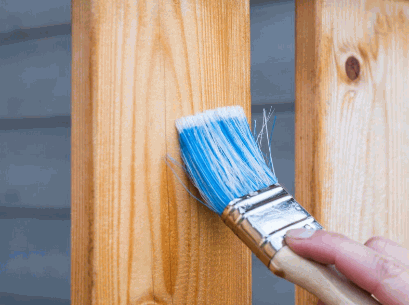
Why Protecting Your Fence Is Important?
Protecting your fence is essential to prolong its lifespan and maintain its structural integrity against various environmental factors.
Regular maintenance of your fence not only enhances its aesthetic appeal but also prevents issues like rotting, warping, and insect infestation. Applying a quality sealant serves as a protective barrier, shielding the wood from moisture, UV rays, and other elements that can cause deterioration. By safeguarding your fence from harsh weather conditions such as rain, snow, and extreme heat, you can significantly extend its durability and prevent costly repairs or replacements in the future.
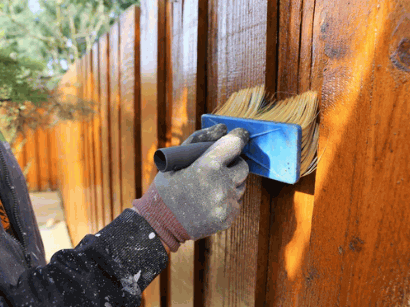
What Are The Common Causes Of Fence Damage?
Several factors can lead to fence damage, including exposure to harsh weather conditions, aging, pest infestations, and accidental impacts.
Weather conditions can deteriorate a fence’s structural integrity over time, causing it to weaken and even break under extreme circumstances. The impact of aging is gradual, as the materials used in a fence may degrade over several years, leading to cracks, warping, or sagging. Pest infestations, such as termites or rodents, can also be a significant threat to a fence, as they can burrow into the wood, compromising its strength. Accidental damage from activities like improperly handling lawn equipment or a fallen tree can unexpectedly harm a fence, necessitating repairs.
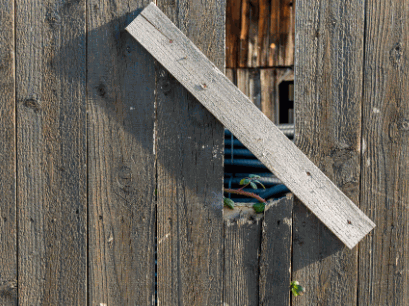
Weather Conditions
Weather conditions pose a significant threat to the integrity of your fence, especially when exposed to UV rays, moisture, and extreme temperatures.
Without proper maintenance and care, your fence can deteriorate quickly, leading to structural instability and aesthetic deterioration. Sealing your fence is crucial to protect it from moisture intrusion and prevent rotting or warping. Additionally, UV rays can cause fading and deterioration of the wood, reducing its lifespan.
Advancements in nanotechnology have brought innovative solutions to enhance the durability of fences. Nanoparticles can be integrated into sealants or coatings to provide a protective barrier against weather elements, prolonging the lifespan of the fence.
Implementing a routine inspection schedule and promptly addressing any damage, such as loose boards or rusted metal parts, can significantly reduce the impact of weather-related factors on your fence’s longevity. By taking proactive measures and investing in quality materials, you can ensure that your fence remains sturdy and appealing for years to come.
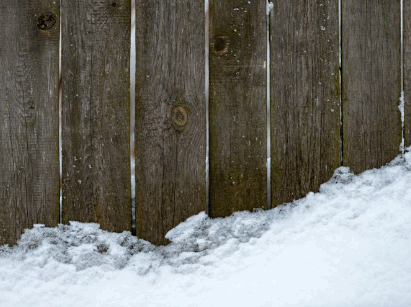
Age And Wear
As fences age, wear and tear become inevitable, leading to decay, discoloration, and structural weaknesses that necessitate regular sealing, staining, and cleaning.
Over time, exposure to harsh elements like sunlight, rain, and fluctuating temperatures can cause wooden fences to warp, crack, and splinter.
- Sealing the wood creates a protective barrier, preventing moisture from seeping in and causing rot.
- Staining not only enhances the appearance of the fence but also provides an additional layer of defense against weathering.
- Regular cleaning can remove dirt, debris, and mildew, helping to prolong the life of the fence and maintain its structural integrity.
Pest Infestations
Pest infestations can wreak havoc on your fence, causing damage that requires prompt attention, annual maintenance, rust prevention, and the application of suitable sealants.
When pests like termites or carpenter bees invade your fence, they can weaken its structure and compromise its stability. This not only affects the aesthetics of your property but also the security and privacy it provides. Regular inspections and maintenance are crucial to detect any early signs of infestation before the damage becomes extensive.
- Rust prevention is another vital aspect to consider, especially for metal fences. Applying a rust-resistant coating or paint can help protect the fence from corrosion caused by moisture and environmental elements.
- Sealants play a key role in safeguarding your fence against pests and decay by creating a protective barrier that repels insects and prevents moisture penetration. Choosing a high-quality sealant suitable for your fence material is essential for long-term durability.
Accidental Damage
Accidental damage to fences can occur due to various reasons, necessitating repairs, considerations for vinyl replacements, professional assistance, and protection against water-related issues.
When fences sustain accidental damage, it can significantly impact not only the aesthetics of your property but also its security. Understanding the repair process is crucial as it involves assessing the extent of the damage and determining the best course of action. For homeowners considering vinyl replacements, vinyl fencing can offer durability, low maintenance, and a clean appearance that can enhance the overall look of the property.
How To Protect Your Fence From Weather Conditions?
Shielding your fence from adverse weather conditions involves applying protective sealants, leveraging nanotechnology for enhanced durability, and employing effective cleaning techniques to combat environmental effects.
In terms of applying protective sealants, opting for high-quality products that are specifically designed for the type of fence you have is crucial. These sealants create a barrier against moisture, UV rays, and other damaging elements. Nanotechnology has revolutionized fence protection by offering coatings with exceptional strength and resistance.
Regularly cleaning your fence not only enhances its appearance but also helps prevent mold, mildew, and rot from setting in. By incorporating these strategies, you can significantly prolong the lifespan of your fence and maintain its structural integrity.
Regular Maintenance
Regular maintenance is crucial for preserving the quality of your fence, ensuring long-term protection, preventing decay, and extending its lifespan for years to come.
By routinely inspecting your fence and addressing any damage promptly, you can prevent minor issues from escalating into major repairs, ultimately saving you time and money.
Protecting your fence with a proper staining regimen not only enhances its aesthetics but also acts as a shield against harsh weather conditions and wood-destroying insects.
Consistent upkeep, such as clearing debris, trimming vegetation around the fence, and re-sealing when necessary, can significantly increase the durability of your fence, ensuring it stands strong for many years without compromise.
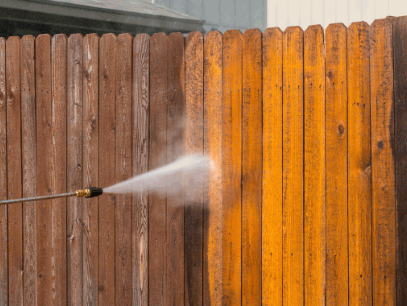
Applying Protective Coatings
Applying protective coatings to your fence can fortify its defenses against harsh weather conditions, seal potential vulnerabilities, and repair existing damage to maintain structural integrity.
Protective coatings act as a barrier, shielding the fence from rain, snow, UV rays, and other environmental elements that can lead to deterioration over time. This layer of protection helps to extend the lifespan of the fence, reducing the need for costly repairs or replacements. These coatings seal critical areas such as joints and crevices, preventing moisture from seeping in and causing rot or warping.
Explore: Can You Paint Vinyl Fencing
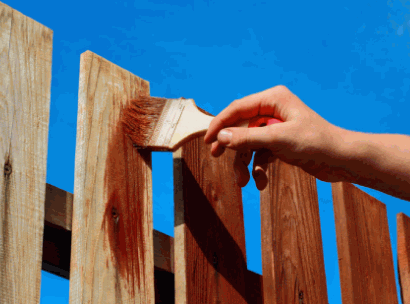
Choosing Durable Materials
Selecting durable materials for your fence is essential for long-lasting protection, reinforcing weak areas, and enhancing its resistance to environmental stressors.
In terms of enhancing the longevity of your fence, opting for materials known for their durability is crucial. Durable materials not only provide an added layer of protection but also contribute to the overall strength of the structure. By choosing high-quality materials, you are reinforcing weak areas and minimizing the risks of damage from external elements.
Investing in durable materials for your fence can significantly improve its resilience against harsh weather conditions, pests, and wear over time. These materials are designed to withstand the test of time, ensuring that your fence remains sturdy and reliable for years to come.
How To Protect Your Fence From Age And Wear?
Protecting your fence from the effects of aging and wear involves regular inspections, prompt repairs, and reinforcing weak areas to maintain its structural integrity.
Ensuring your fence remains in top condition as it ages is essential to prolong its lifespan. Regularly inspecting the fence for signs of wear, such as rust, rot, or loose sections, can help catch problems early before they escalate. Addressing these issues promptly through repairs like fixing loose boards, replacing damaged sections, or repainting can prevent further deterioration. Reinforcing weak areas through techniques like adding braces, sturdy posts, or protective coatings can help strengthen the fence and prevent future damage.
Regular Inspections
Regular inspections play a vital role in detecting signs of wear, decay, and damage in your fence, allowing for timely sealing, staining, and repair interventions.
By regularly examining your fence, you can proactively address issues before they escalate, extending the longevity and aesthetic appeal of your outdoor space. Preventative measures such as sealing and staining not only protect the wood from weather elements but also enhance the overall look of your property. Prompt repairs can prevent further deterioration and costly replacements down the line. Timely maintenance based on inspection findings ensures that your fence continues to serve its purpose effectively, providing security, privacy, and curb appeal.
Repairing Damages Promptly
Promptly addressing damages in your fence, such as wear and tear, stains, or structural issues, is key to preventing further deterioration and ensuring its longevity.
Regular maintenance and repair not only enhance the aesthetic appeal of your property but also significantly prolong the lifespan of your fence. By promptly fixing damages, you prevent minor issues from escalating into major structural problems that may require expensive repairs. Addressing stains promptly can help maintain the overall look of your fence and prevent them from becoming permanent. For complex issues or large-scale damages, seeking professional assistance can ensure that the repairs are done correctly and efficiently, saving you time and effort in the long run.
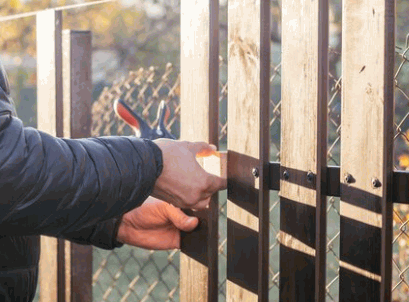
Reinforcing Weak Areas
Reinforcing weak areas in your fence through proactive measures, maintenance routines, and protective coatings is essential to prevent structural damage and ensure longevity.
Regularly inspecting your fence for signs of wear and tear can help you identify weak spots early on, allowing you to address them promptly. Applying a durable protective coating, such as a weather-resistant sealant, can significantly extend the lifespan of your fence by shielding it from harsh elements like rain, snow, and UV rays. Reinforcing weak areas with sturdy materials, like steel brackets or concrete footings, can bolster the overall strength of your fence and prevent it from succumbing to external pressures. Ensuring proper installation and adequate ventilation around the fence can also aid in minimizing moisture buildup and reducing the risk of rot or decay. Taking proactive steps to reinforce weak areas in your fence not only enhances its durability but also saves you from costly repairs in the long run.
How To Protect Your Fence From Pest Infestations?
Safeguarding your fence against pest infestations requires implementing regular control measures, removing attractants, and repairing any holes or gaps that may serve as entry points for pests.
One effective strategy to prevent pest infestations in fences is to set up physical barriers that deter pests from climbing or burrowing through. Installing motion-activated devices or lights can startle pests and discourage them from lingering around the fenced area. By maintaining a clean and clutter-free environment near the fence, you can eliminate potential hiding spots for pests and reduce their attraction to the area. It’s also essential to promptly address any vegetation overgrowth that could provide pathways for pests onto your property.
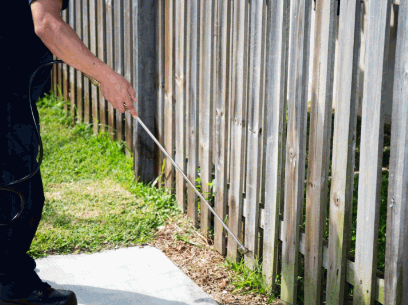
Regular Pest Control Measures
Implementing regular pest control measures for your fence is essential to prevent infestations, minimize damage, apply suitable sealants, and seek professional assistance for severe pest issues.
Regular pest control measures not only help safeguard your fence but also play a significant role in protecting your property as a whole. By consistently monitoring and managing pests, you can effectively ward off potential infestations that may cause harm not only to the fence but also to nearby structures.
Sealants are crucial in creating a protective barrier against pests, ensuring that they are less likely to find a way into your fence. In addition, utilizing professional pest management services can provide expert insights and techniques to address any severe pest problems with long-term solutions.
Removing Attractants
Effective pest control involves removing attractants near your fence to prevent infestations, reduce rust risks, adopt suitable cleaning techniques, and maintain a pest-resistant environment.
By eliminating food sources like fallen fruit, standing water, and improperly stored trash around your fence, you actively discourage pests from setting up camp near your property. This simple action can significantly reduce the likelihood of infestations and the damage they cause. Keeping vegetation trimmed and ensuring that there are no entry points for pests to access your property from the fence line can further enhance your pest prevention efforts.
Repairing Any Holes Or Gaps
Addressing any holes or gaps in your fence is crucial for pest-proofing, regular maintenance, applying protective coatings to prevent vulnerabilities, and ensuring a secure barrier against pests.
Over time, fences can develop openings that act as entry points for unwanted intruders like rodents or insects. These small gaps may seem insignificant, but they can lead to significant pest infestations if left unchecked. Ensuring that your fence is properly maintained not only enhances its aesthetic appeal but also plays a vital role in safeguarding your property from pest-related issues. By inspecting and promptly repairing any damages, you create a strong line of defense against potential invaders.
How To Protect Your Fence From Accidental Damage?
Preventing accidental damage to your fence involves proper installation, marking its location for visibility, conducting regular inspections, and safeguarding against potential water-related issues.
Correct installation of the fence is vital to ensure its durability and longevity. Marking the location of the fence using visible markers or signs helps prevent accidental collisions or damage.
Regular inspections allow you to identify any issues early on, such as loose boards or leaning posts, which can be promptly addressed to prevent further damage. Taking protective actions, such as applying a weatherproof sealant or maintaining proper drainage around the fence, can mitigate risks of water-related damage caused by excessive moisture or flooding.
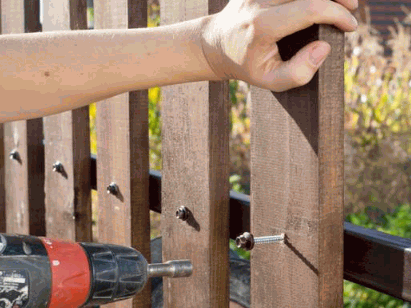
Proper Installation
Ensuring the proper installation of your fence is vital for its durability, reinforcement of weak areas, consideration for vinyl alternatives, and overall structural integrity.
Proper installation not only enhances the aesthetic appeal of your property but also contributes to the security and privacy it offers. By ensuring that the fence is installed correctly, you are laying a strong foundation for its longevity and stability.
Reinforcement methods play a crucial role in strengthening weak areas that are prone to damage or wear. Whether it’s through sturdy posts, additional support structures, or advanced anchoring techniques, reinforcing these vulnerable points can significantly increase the fence’s resilience against harsh weather conditions and external forces.
Opting for materials such as vinyl can provide added protection against rot, decay, and insect infestations, making your fence more durable and low maintenance in the long run. The use of vinyl also offers a versatile range of styles and colors to suit your aesthetic preferences while ensuring long-lasting performance.
The correct installation of a fence not only impacts its immediate functionality but also determines its ability to withstand the test of time. A well-installed fence can enhance the value of your property, provide a sense of security, and serve as a stylish addition that lasts for years to come.
Marking The Fence’s Location
Marking your fence’s location ensures visibility, aids in accident prevention, supports maintenance efforts and guides professional assistance access during repair or upkeep tasks.
Ensuring clear visibility of your fence boundaries through marking enhances safety on your property by minimizing the risk of accidental collisions. By adding clear markers, the chances of personal injury and vehicular damage due to unseen fence lines are significantly reduced. Marking serves as a practical aid for maintenance activities, allowing easy identification and access to specific areas that may need attention. It also streamlines the process for professionals called upon to carry out repairs or specialized maintenance tasks, as they can quickly pinpoint the exact location in need of their expertise.
Regular Inspections And Maintenance
Regular inspections and maintenance routines are essential for detecting accidental damage, reinforcing weak areas, addressing water-related issues, and ensuring the overall health of your fence.
Holding a routine schedule of inspections and maintenance checks for your fence can significantly extend its lifespan and overall durability. By routinely assessing the condition of your fence, small issues can be identified and promptly addressed before they escalate into more significant problems that may compromise the integrity of the entire structure.
Proactive maintenance is key to preventing costly repairs that could result from neglecting regular upkeep. For instance, detecting and repairing water damage early on can prevent the rotting of wooden components and corrosion of metal parts, thus preserving the stability and aesthetics of the fence.
